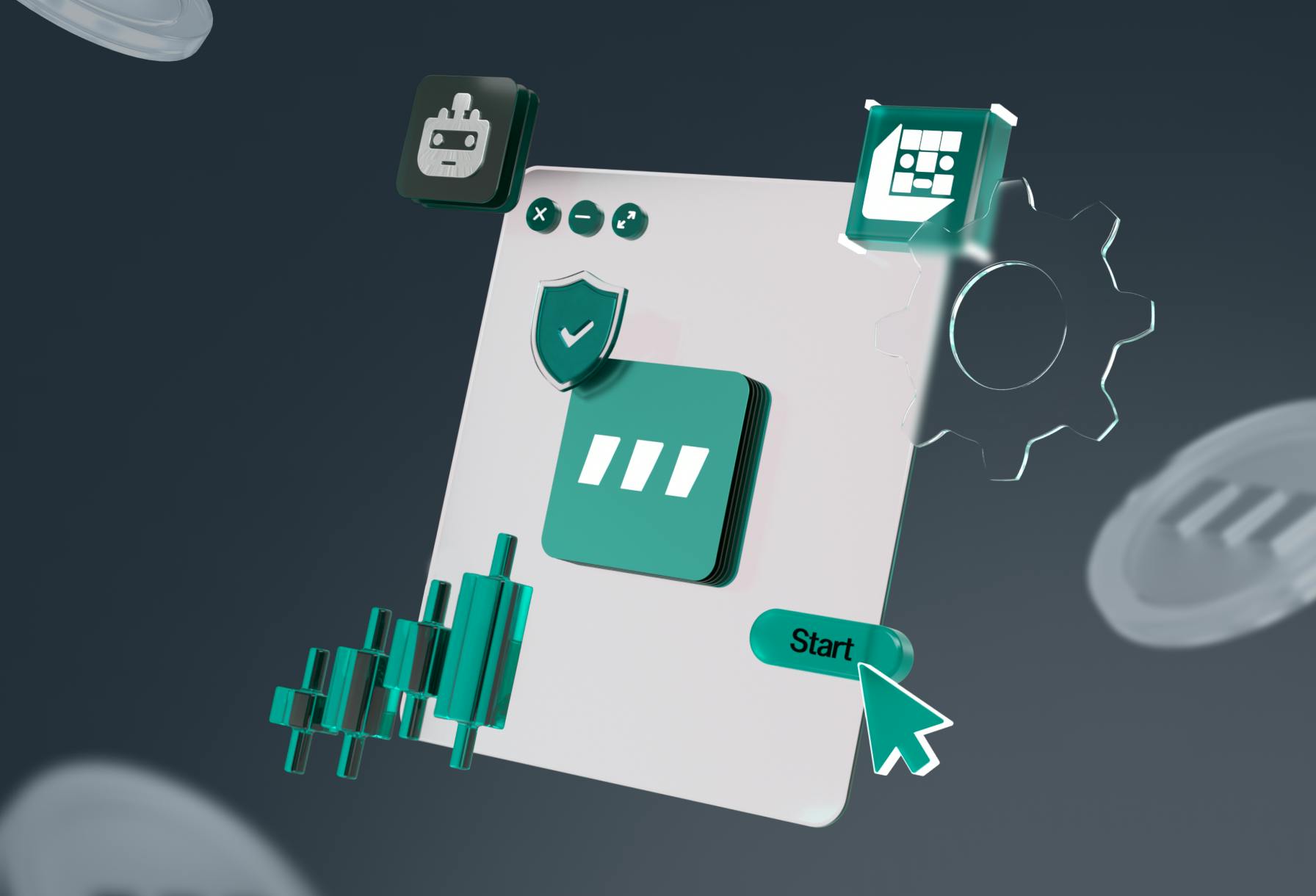
- All
- Analytics
- Technical Analysis
- Trading
- Blockchain
- DeFi
- Guides
- Company News
- Educational
- Opinion
- Price Predictions
- Tools
- Market News
- News
- Trading cases
- Practical guides
- Exchanges
- Trading signals
- Cryptocurrency
- Crypto bots
- Other
Become a crypto master
Learn everything about crypto,
trading and bots

How to Implement Stop Bot function for Grid Bot
Discover the updated Stop Bot features for 3Commas Grid Bots, including custom stop conditions, shutdown summaries, and multi-bot coordination for professional traders.
Start Trading on 3Commas Today
Get full access to all 3Commas trading tools with free trial period

This guide is designed to help you configure and operate an efficient and effective grid trading bot. Grid trading is a strategy that uses algorithms to execute buy and sell orders at predefined price intervals. The goal is to capitalize on price fluctuations within a set range to generate profits. In this guide, we will cover essential steps for setting up the grid bot for both long and short positions, including grid level configuration, upper limit settings, and futures compatibility. By following this guide, you can greatly increase the potential for your trading bot to operate optimally within the desired price range and stop trading when the price reaches the set limits, reducing risk and enhancing profit potential.
How It Works
1. Grid Trading Strategy:
- Range Setting: Establish a price range within which the grid bot will operate. For instance, set the range from $1.50 to $3.
- Grid Levels: Within this range, the bot will place buy orders at regular intervals. For example, buy orders might be placed at $1.50, $1.60, $1.70, and so forth.
- Upper Limit Stop: Define an upper limit for trading, such as $3.10. When the price reaches this upper limit, the bot ceases all trading activities to prevent overexposure.
2. Long Grid Bot Configuration:
- Avoid Buying High: Configure the bot to only purchase assets at lower prices within the defined range to avoid buying when prices are high.
- Continuation of Grid: The bot will continue placing buy orders as long as the price remains below the upper limit of $3.10.
3. Expansion Down:
- This feature ensures that the bot continues to place buy orders even if the price drops further within the grid range, maintaining the predetermined grid pattern. This continues until the price reaches $3.10, where trading stops.
4. Futures Compatibility:
- The same grid trading principles can be applied to futures trading. The bot will operate within the specified range and stop trading if the price moves above a certain threshold.
5. Short Futures Grid:
- Avoid Selling Low: For short positions, configure the bot to avoid selling at lower prices within the range. It continues to place sell orders until the price hits the lower limit, where it stops to prevent excessive losses.
Implementation Steps:
1. Setting Up the Grid Bot:
- Define the trading pair (e.g., ARKM/USDT).
- Set the desired price range for the grid (e.g., $1.50 to $3).
- Specify the intervals or grid levels for placing buy and sell orders.
2. Configuring Buy and Sell Orders:
- Input the desired buy intervals within the set range (e.g., buy at $1.50, $1.60, $1.70, etc.).
- Set the bot to stop trading once the price reaches the upper limit of $3.10.
3. Enabling Expansion Down:
- Activate the feature to ensure the bot continues to buy as the price drops, maintaining the grid levels until the upper limit of $3.10 is reached.
4. Adding Stop Conditions:
- For long positions, set an upper stop limit (e.g., $3.10).
- Ensure the bot ceases trading once this upper limit is hit to prevent buying at excessively high prices.
5. Avoiding Trailing Up:
- Avoid using trailing up features, as they may interfere with the upper stop limit functionality.
- Ensure the bot stops trading at the predefined upper limit without trailing up, to maintain the intended control over trading activities.
Description of Features:
Grid Long Bot:
- Range: Operates within $1.50 - $3.
- Stop: Stops trading once the price hits $3.10.
- Expansion Down: Enabled to continue buying as the price drops within the grid range.
Futures Grid Bot:
- Range: Specified range for short positions.
- Stop Below: Ensures the bot stops selling at a lower price limit to avoid excessive losses.
Important Note:
- Trailing Up: Avoid enabling this feature, as it may cause the bot to continue buying beyond the upper stop limit, rendering the stop condition ineffective.
By following these detailed steps, the grid bot can efficiently trade within the specified range, ensuring a controlled and strategic approach to trading. This prevents unnecessary losses and maintains a consistent trading pattern.
2025 Update: Enhanced Grid Bot Controls and Strategic Shutdown Use Cases
In 2025, market conditions have underscored the importance of agile risk management. Volatility spikes driven by geopolitical shifts and AI-driven trading volume surges demand faster, more deliberate action from traders—especially those running automated bots. In this context, the Stop Bot function for Grid Bots is more than a convenience; it's a critical part of capital protection and strategy realignment.
What’s New?
3Commas, as a crypto trading software provider, has introduced several backend refinements to the Stop Bot feature. Users can now:
- Define custom stop conditions: In addition to manual intervention, traders can assign specific event-based triggers (e.g., crossing a volatility index or hitting an external indicator via webhook).
- Access shutdown summaries: Post-stop reports now include metrics such as final PnL, open grid spacing, and unfilled order count, helping professional traders review performance at termination.
- Use multi-bot coordination: Asset managers running portfolios across multiple Grid Bots can now implement grouped stop conditions to coordinate exits across correlated pairs.
Strategic Use Cases
Professional traders are increasingly using Stop Bot functions as part of their broader trade lifecycle planning. Rather than simply reacting to price drops, they are:
- Rotating capital: Manually stopping Grid Bots in one pair to reallocate to emerging trends with more favorable volatility structures.
- Triggering macro-level pivots: Using webhook-based alerts from third-party analytics tools to halt bots across several exchanges during global macro news events or regulatory shifts.
- Reducing exposure during weekends: Some institutions now implement automatic bot shutdowns during low-liquidity periods to avoid adverse price moves from thin order books.
Final Thoughts
As AI crypto bot usage scales across all trader tiers, automated crypto trading software must evolve to keep pace with strategy complexity and risk tolerance. The Stop Bot feature for Grid Bots has shifted from a reactive safety lever to a precision tool for execution discipline. Traders who apply it proactively are better positioned to maintain control in unpredictable market cycles.





